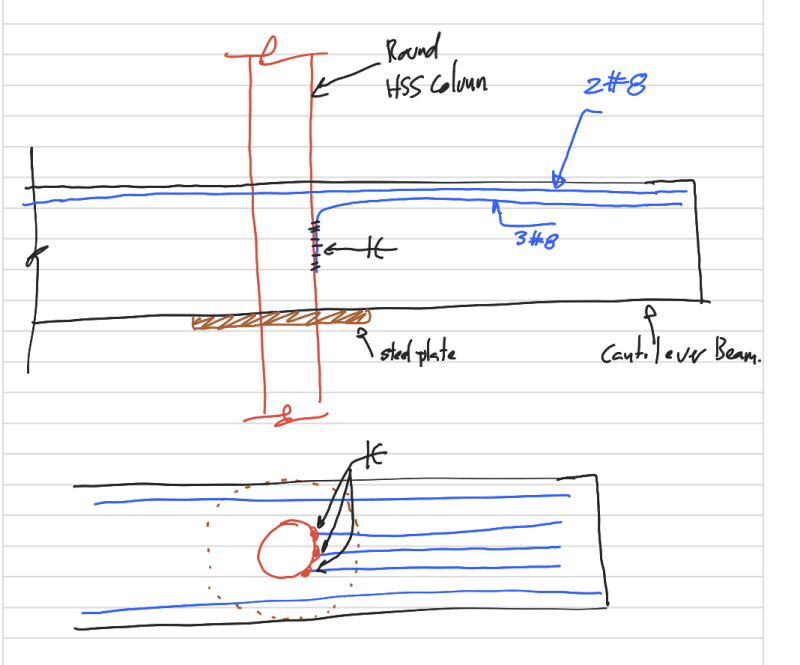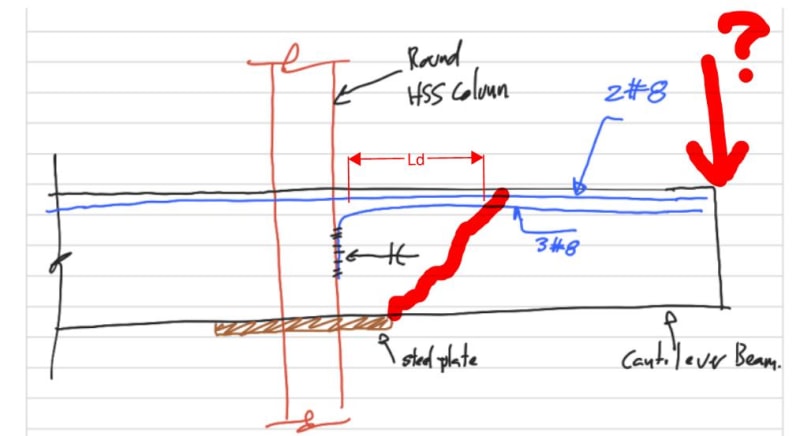Hi everyone!
I am reviewing a retrofit project where I found a connection detail I have never seen before, I have serious doubts that this can work.
There is concrete overhang beam which is partially interrupted by a circular HSS column, the beam top bars, which are working at full capacity, are 5#8 bars. Only two bars are continuous over the column going through the sides of the column, the remaining 3 bars are welded to the steel column.
This 3 bars are welded by their 90° leg (flave-bevel goove weld) perpendicular to the direction of the bar/load.
My thoughts are that this load will produce a high stress concentration at the top of the weld due to excentricity, from the vertical distance between the center of the bar and weld.
Some conifnement may be present by the concrete mass restraining the bar from bending, but seems to risky to ask 100% of ultimate capacity to that bar/connection, it looks to me like the weld will tear apart like a zipper.
(I think I have seen similar things when a U bar is welded upside down to an embedded base plate, usually with lower diameter bars, I never liked this solution and can't find any referene now)
Does anyone used or seen such a detail before? do you have a reference for this either allowing or banning this kind of weld?
Find drawing attached.

Thanks!
I am reviewing a retrofit project where I found a connection detail I have never seen before, I have serious doubts that this can work.
There is concrete overhang beam which is partially interrupted by a circular HSS column, the beam top bars, which are working at full capacity, are 5#8 bars. Only two bars are continuous over the column going through the sides of the column, the remaining 3 bars are welded to the steel column.
This 3 bars are welded by their 90° leg (flave-bevel goove weld) perpendicular to the direction of the bar/load.
My thoughts are that this load will produce a high stress concentration at the top of the weld due to excentricity, from the vertical distance between the center of the bar and weld.
Some conifnement may be present by the concrete mass restraining the bar from bending, but seems to risky to ask 100% of ultimate capacity to that bar/connection, it looks to me like the weld will tear apart like a zipper.
(I think I have seen similar things when a U bar is welded upside down to an embedded base plate, usually with lower diameter bars, I never liked this solution and can't find any referene now)
Does anyone used or seen such a detail before? do you have a reference for this either allowing or banning this kind of weld?
Find drawing attached.

Thanks!

